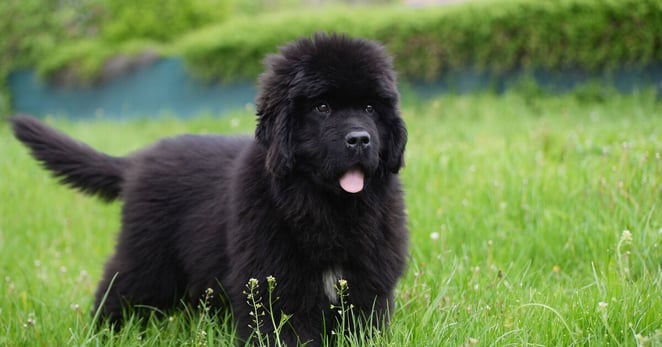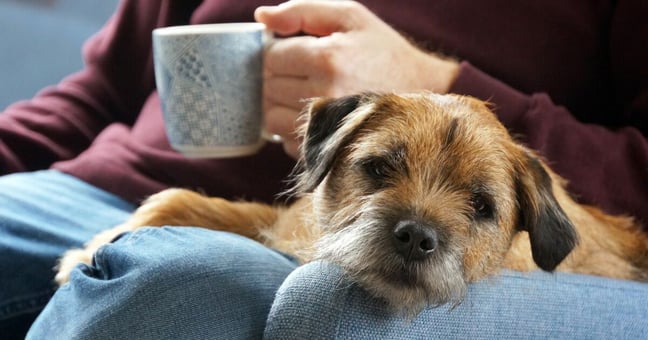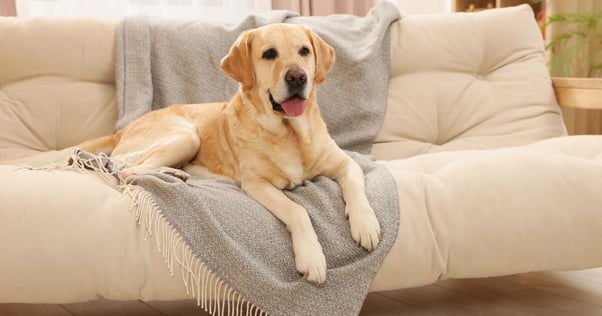As spring brings longer, sunnier days with warmer temperatures, we tend to see much more dog hair in our homes. You may find yourself asking why your dog has started molting more often than before, and this is exactly what we’re here to delve into.
Understanding Dog Hair
Most dogs have hair covering their whole body and their hair is incredibly important for things such as body temperature control, skin protection and sensory perception. Many dogs are also double coated, meaning they have a coarse outer coat which protects the softer, shorter undercoat that lies beneath.
You will find that breeds with an abundant undercoat will shed more, and this is the layer that changes with the seasons. If you have one of these breeds, such as a husky, then you are likely to see more hair being shed in the springtime.
During spring, dogs tend to change their thicker winter coat for their summer coat. Which means at this time of year, your dog will be molting plenty! Don’t be fooled into thinking this is the only time of year that dogs molt though. Dogs can molt throughout the whole year. In fact, it is a natural part of the life cycle of their hair, just like it is for us humans. 
If you are worried about the amount of fur your dog is shedding, consider how much they have shed in previous years. Look to see whether there are any areas of skin damage or sores, or if they are licking their coat more than usual. If you see any of these changes, we recommend seeking advice from your trusted vet. They can check for any underlying medical issues that may be causing your dog to behave differently.
Which Breeds Molt?
When looking for a dog, your preference may be to have a dog that doesn’t molt all year round. If this is the case, then here are a few breeds that shed much less than others:
- Poodle
- Border Terrier
- Bichon Frise
- Schnauzer
- Great Dane

However, if shedding isn’t a problem for you, there are plenty of dog breeds that molt hair more often. This is due to their hairs having shorter lifespans. These breeds include:
- Labrador
- Newfoundland
- Husky
- German Shepherd
- Welsh Corgi
- Golden Retriever

Maintaining Your Pup’s Coat
Being consistent with brushing your dog’s hair will help to maintain their coat and reduce the fur your dog sheds. Brushing also plays a part in reducing the chance of knots and matting within the coat, which can damage the underlying skin if left for a long time.
Brushing doesn’t have to be seen as a chore. In fact, it should be seen as the opposite. It can be a special time between you and your pup which can help strengthen your bond.
However, brushing can be uncomfortable for some dogs who aren’t used to it. If you struggle with brushing your pooch, we recommend you follow these steps:
- Find A Quiet Place: Select a quiet place within your home for this training experience. We recommend trying the ADAPTIL Calm diffuser in the room, to provide your dog with comfort before you begin.
- Introduce The Brush: Start by showing them the brush and rewarding any positive interactions they have with it.
- Start Brushing: Slowly begin to brush gently, rewarding any calm or positive behaviour your dog displays.
- Increase The Brushing Area: Begin to brush their whole body, leaving the areas your dog is less comfortable with until they are nice and relaxed.
The amount you need to brush your dog depends on their type of coat. If you find that your dog is a heavy shedder, you will need to brush them more often.
When it comes to what to brush your dog with, this also depends on their coat length and style. Longer-haired breeds benefit from shedding combs or rakes, where shorter-haired breeds benefit from bristle brushes or grooming gloves.
Where there are lots to choose from, it may be a case of trial and error to find the brush that works best for you and your dog.

What To Do With All The Dog Hair
If you are looking for what to do with all the excess dog hair in your home, there are lots of options other than throwing it away. You could pop it outside for the birds to use to line their nests. Or even put it around the edge of your vegetable patch to deter squirrels!
Unfortunately, you can’t stop dog molting from occurring, but you may be able to assist the process so that there is less of an impact in your home! We recommend using a lint roller to remove dog hair from furniture, and you! Keeping up with vacuuming is another great way to keep on top of all the hairs in your home, but be sure to understand if your pup is happy around a vacuum! Others swear by using a rubber broom to help collect all the fur together, making it much easier to vacuum up.
Hopefully now you have a better understanding of why dogs molt and how to keep your home cleaner during the springtime. For any further advice or information on our ADAPTIL product range, please contact us! We are very happy to help and would love to hear from you.



